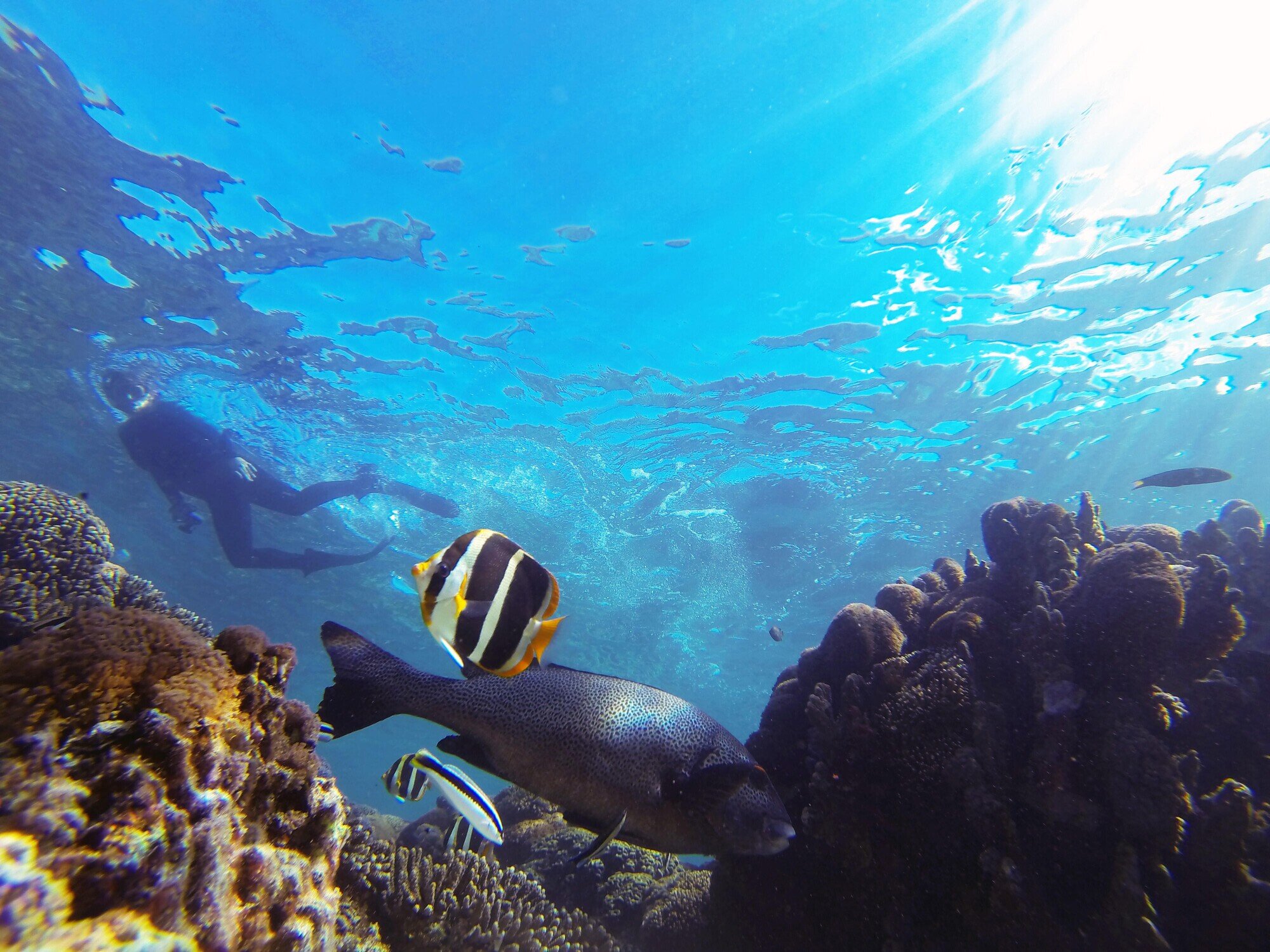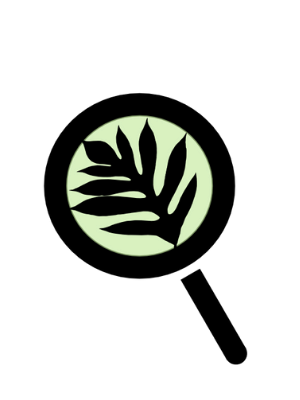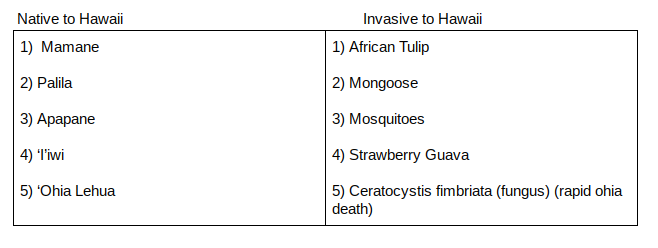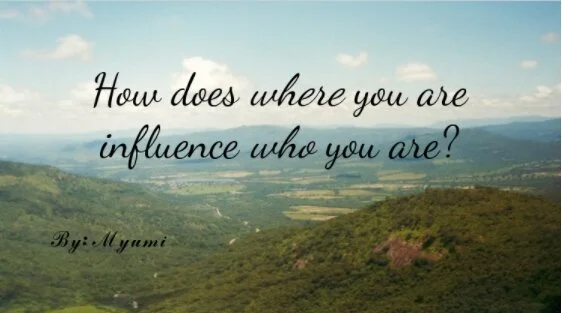
Thinking Systemically
The ocean is a system that has many different parts to zoom in and out on.
We need to create helpful solutions based on what we learn to help better our underwater environment.
My Understanding Of The Skill
Thinking Systemically means to look at the whole picture instead of just looking at one part of it. It means thinking critically about our actions and choices and how they affect everything around us. Creating helpful solutions together and applying your knowledge in a situation to become a better problem solver is also an example of this skill. In order to make an impact on this world, we need to think critically and think about how our actions affect everything around us. Thinking critically means analyzing an issue in order to make a judgement. If you are trying to fix a problem, and you end up creating another problem, that is not Thinking Systemically.
Thinking Systemically is not focusing on one small thing or thinking of only yourself in a situation. It’s making connections and patterns before you make decisions. For example, taking time to make those connections and see those patterns before you take action too. You can’t only focus on one thing or problem. This can be seen when there is a problem that involves you, but also many other things. For example, if you are wanting to have a new park built near your house, you are likely to automatically think about how it will benefit you and your family. Instead of taking action and requesting the park, you should think about how it’s going to affect your neighbors, the plants, and the animals around you to make the best decision. You have to zoom out and look at the big picture.
When Thinking Systemically, you also have to think about what will happen when you do something, and what will happen after that. For example, if you decide not to spend any more money on fresh vegetables and grow your own, you most likely will think about how this is going to make a positive impact. If you stop to think for a moment, you'll realize how it can affect the incomes of the workers and farmers, which can reduce the amount they spend, like a ripple effect. A ripple effect is the result of an action that spreads continuously. It doesn’t mean you shouldn’t grow your own food, but it’s important to think about how your actions might affect others and the community.
To use this skill successfully, you always have to take a moment to think about your actions before you plan to do them. It also means not just only looking at the big picture, but looking at parts of it more closely in detail. When someone is not Thinking Systemically they aren’t paying attention to detail and just looking at something more vaguely. For example, if you are just skimming through a book, you might not notice the small details that are very important. It is also important to not just look at one part of the book, because then you could miss so much more detail. It’s important to zoom in and zoom out on a topic, not just one or the other. This helps you to see the whole picture and get all the information necessary. If you only see the whole picture, or one part of it, you might not get all the details you need and can make the wrong judgement based on the information.
If you aren’t Thinking Systemically you would jump into something without any knowledge on what to do. For example, a person wants to run a business, so they just start it without trying to think about the possible economic and human consequences of ways to increase sales or reduce costs.
A way that I use this skill in my life is through my Hawaiian Oli class. In this class we learn Hawaiian chants about people, places, and different topics. I need to make connections and see patterns within the meaning of the chants and how they relate to myself and Hawai’i. Most of the time, we need to use a translator to learn the meaning of our chants to develop a better understanding of what each word means. Then, we connect it back to how to use the chants in our daily life. In order to oli properly, we have to make sure the right mindset and intention goes into an oli. Learning about the mo’olelo and stories behind the oli help us to build connections. When it is time for us to perform the oli, we have the right intention because we have learned the meaning behind it. This helps us to oli better because we can connect to the oli.
This skill is important to me because I think we wouldn’t be able to solve problems effectively without this skill. It's important to connect everything back together and identify patterns to create solutions for our problems effectively. Meaning, every part of the problem gets addressed so we solve the problem as a whole, instead of just one part of it which can prevent more issues later on.
My Growth In The Skill
When I first came to SEEQS, I didn’t think I knew how to use Thinking Systemically because it seemed more complex and difficult than the other skills. When I first tried to use this skill, I thought it meant to think about everything, instead of just one thing. I think I first used the skill Thinking Systemically in my 7th Grade science class. We had a project called Biodiversity in My Backyard. We picked 5 native and invasive plants and animals to put in our “backyard”. Our job was to figure how everything affected each other. So I tried to think about everything in my Backyard and how each animal and plant affected each other.
I think this project taught me how to Think Systemically because I made patterns and connections, which taught me how to find a solution to the problem of the invasive species.
Now as an 8th grader, I understand that Thinking Systemically means to not only look at specific parts, but also to look at the whole picture of a situation to completely understand it. It also means to piece parts together and make connections. For example, if I’m trying to solve something and I have parts as clues, I’m going to need to put them together and make connections to solve it. Thinking Systemically can be used even in simple things that you do in your life, like solving a jigsaw puzzle. To solve a jigsaw puzzle, you have to picture the whole image, but also look at the small pieces and figure out where to put them.
I also have grown and identified patterns. For example, in my EQS work, I found patterns in my research and thought about how they related to each other. I also not only zoom out or in, but I do both to fully understand the context of what I’m learning. Now before I approach a problem, I use Thinking Systemically to evaluate the situation before I take action on it. I can use the skill in my everyday life now. For example, my cousin came to me and told me he got hurt by another kid. Instead of scolding that kid or being mad at him for hurting my cousin, I asked what happened before acting on the situation. I asked the kid his side of the story, and then I got my cousin’s side of the story. After hearing both of their stories and my cousin’s sister’s story who was standing there when it happened, I came to a conclusion and knew what to do. I found out that my cousin had said something mean to the kid, and the kid punched him in response. Knowing they were both in the wrong, I used my judgement and decided they should both apologize which solved the conflict. Instead of blaming each other, apologizing solved this conflict because it addressed both of their needs. I looked at the whole picture, instead of picking a side which probably would’ve resulted in more conflict.
This shows that I have grown in my understanding of Thinking Systemically because I have learned what the other pieces of the skill mean and how to use them in my daily life. A part of this skill that I can still work on is thinking critically. I need to learn to analyze and how to interpret things better. I have a difficult time trusting myself and my own judgement, so I often rely on others to analyze for me because I am prone to trust others more than myself, maybe due to lack of self confidence, or maybe I’m worried I will make the wrong choices. I will continue working on making choices that are best for the environment and everyone around me. Also, I will continue sharing ideas that will solve problems, and not cause more issues.
My Project
In my 8th grade EQS Ho’okama’aina, the end of quarter 1 final project was to create a Photo Essay. Our Essential Question of this EQS is “How can we be the kama'āina needed to create a better Hawai‘i?” and we learned all about what it meant to be a kama'āina (caretaker of the land/child of the land). For this project we needed to create a presentation showing our understanding of how where we live defines who we are.
The guiding question of this experiment was “How does where we are influence who we are?” and we created a slideshow showing how living in Hawai’i has shaped our life. In this project we needed to make connections and identify where the parameters of our place were. I think that our EQS teachers were trying to help us understand how being a kama’aina of Hawai’i has shaped our lives and who we are. This is an important thing to see because we can be grateful for everything we have, and work on being better kama’aina’s for Hawai’i based on who we are and our strengths. Here are my Photo Essay slides:
This project has taught me to take a moment to see how lucky I am to live this life. Usually I focus on the present moment and everything I have to do in that moment. In this project I got to look back on my whole life, and really see the whole picture. It taught me to be thankful for everything I have and how to identify how places change people’s lives. We are so lucky to have all the resources that we have, like clean water, food, and roofs over our heads.
In this Altitude card, I answered some questions that taught me more about how everything in my life ultimately connects together and is who I am today. Now I know how our location affects our identity and who we are. It also affects different choices we make and how we interact with others.
In this project, I also identified my parameters for the first time. I feel at this time in my life my parameters are from Big Island, Hilo, to the Northshore of Oahu, to Honolulu, Oahu. I feel these are my parameters because I have spent the most time here, connected the most with the places, made the most friends, and made the most memories. Hilo, is the birthplace of my friendships, my love for dance, my love for the beach, and so much more. I call it my home and am proud to because I love that little town. I call the Northshore my place too because I feel so connected to land here and the beaches. I have made so many friendships here too and I love being out here and breathing the fresh air, looking at the gorgeous mountains and valleys, and jumping into the crystal clear waters. Honolulu is the birthplace of my love for school, cities, and my new friends. I love these places so much and they are so special to me.
How Does My Project Connect To The Skill?
In this project I had to identify patterns in my life, and show how they made me the person I am today. I also had to make connections and find the parameters of where my place is. I realized you don’t have to only have one area, and that you can have many. The experiences we have in certain areas shape our perception and how we interact with them. I was Thinking Systemically in this project because I zoomed in and out on how what I’ve learned has shaped the person I am today.
I also learned more about myself through connecting who I am to where I live. I have moved a lot and each place has made me who I am and built resilience in me. I identified the parameters of my place and how each area has shaped who I am.
I learned that our physical location has a big impact on who we are, our activities, our personalities, and how we react to things. Your location can influence your behavior and motivation to act or do things. The environment around you can change and influence your mood. This is an example of Thinking Systemically because it’s identifying how one thing affects another.
Where we live can influence our amounts of life content or satisfaction in ways that are most likely based on characteristics of our personality. This project helped me to see how living in Hawai’i has changed and affected my personality.
For example, in the slide above I explained the connection between my place and my love for the beach, forests, fruit, and dance. This demonstrates Thinking Systemically because I was able to recognize a pattern in how my place has affected my interest and love for nature and art. This helped me to make new choices such as deciding to spend more time in nature, now that we are in a pandemic. These choices helped me to become calmer and more relaxed, which helped my relationship with my family become stronger and more peaceful. Overall, this helps me to develop better solutions to the problems facing my place because I now understand more about it, and I feel so much more grateful for everything Hawaii has taught and offered me.
Also, our access to resources shapes who we are, what we do, our education, our health, and so much more. Some people don't have access to certain things, for example, clean water. That will affect everything about their health and they could get ill, sick, or even die. They probably won't have a good, happy life because they would always be thirsty or ill from drinking dirty water. If they have little water, they might not get to have showers as often and that could leave people always feeling dirty and moody. If people don't have access to school, or any education, they might not know what they want to do when they're older and not have plans for the future. Some people might not have any and are just going to stay where they are living because they can't afford to go away someday. People who have access to all these resources will have very different lives from people who don't have access to these resources. These examples are things that I considered during this project. I thought about the big picture and asked myself “Who would I be if I didn’t have access to resources? Who would I be if I didn’t live in Hawai’i?” Then I had to zoom into specific parts of my life, like dancing hula, and identify how this has changed me and made me into the person I am today.
View Other Sustainability Skill Reflections:
Reasoning Analytically
Managing Effectively
Communicating Powerfully
Collaborating Productively






